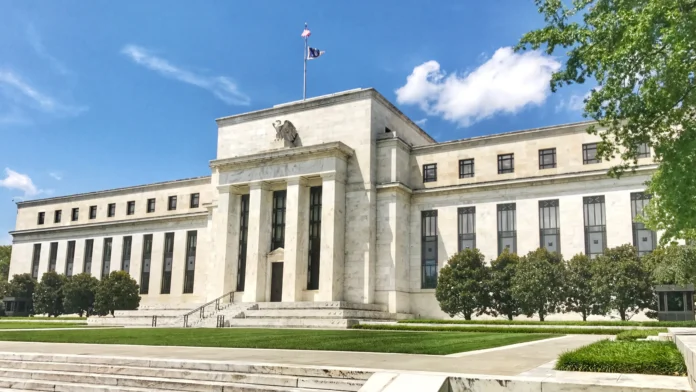The financial markets are entering what could be a pivotal week, marked by a Federal Reserve meeting, the release of U.S. employment data, and earnings reports from tech giant Apple Inc. These events have the potential to set the tone for both stocks and bonds for the remainder of the year.
October has proven to be a turbulent month, living up to its reputation for volatility. Rising Treasury yields and geopolitical uncertainties have exerted pressure on stock markets, with the S&P 500 index declining by 3.5% during the month. This loss compounds the overall decline of more than 10% from its peak in late July.
The trajectory for the rest of 2023 may largely hinge on the bond market. The Federal Reserve’s “higher for longer” stance on interest rates, combined with mounting U.S. fiscal concerns, propelled the 10-year Treasury yield to 5% earlier this month, a level last seen in 2007. Higher Treasury yields are perceived as a potential headwind for stocks, as they compete with equities for investors’ attention.

Investors are apprehensive that yields might climb further if the Federal Reserve reinforces its hawkish stance during its monetary policy meeting scheduled for November 1. Strong U.S. employment data, expected to be released the following Friday, could also spur a rise in yields if it bolsters the case for maintaining elevated rates as a measure to cool the economy and curb inflation.
Sam Stovall, Chief Investment Strategist at CFRA Research, noted, “Stocks will start to recover when the market believes that bond yields have peaked.”
While futures markets currently price in a high probability of no rate hike by the Federal Reserve in November and a nearly 80% chance of rate stability in December, central bank officials have signaled their intention to keep the key policy rate at its current levels well into 2024. This timeline is longer than what the markets had previously anticipated.
Investors find themselves in a “waiting game,” evaluating how much economic data would need to strengthen to bring another rate hike into consideration, as explained by Alex McGrath, Chief Investment Officer for NorthEnd Private Wealth.
The robust U.S. Gross Domestic Product (GDP) growth of 4.9% in the third quarter raises concerns that the labor market might still be too hot, or that the Federal Reserve could consider further tightening to control inflation, both of which could contribute to ongoing market volatility.
Charlie Ripley, Senior Investment Strategist for Allianz Investment Management, highlighted the uncertainty, stating, “It feels like we are at a crossroads whether or not the strong growth we’ve seen over the summer months will continue over the fourth quarter,” keeping concerns about inflation and restrictive monetary policies in the foreground.
In addition to these concerns, the Treasury is expected to announce its upcoming auction sizes, fueling anxiety about an expanding federal deficit and increased supply, which have contributed to the rise in yields.
Investors are also keenly anticipating Apple’s earnings report on Thursday. This earnings season has witnessed disappointments from some growth and technology giants, including Tesla and Google. While the tech-heavy Nasdaq 100 index is down 11% from its peak, it still maintains a year-to-date gain of nearly 30%.
Despite the recent downturn, some investors believe the worst of the selling may be behind them. Historical trends suggest a potential stock market rebound in November, a month that has typically seen the S&P 500 advance by an average of 1.5% since 1945, making it one of the year’s stronger-performing months.
Moreover, the trading patterns throughout this year indicate a potential fourth-quarter rebound. In the 14 instances when the S&P 500 has risen by at least 10% through July and subsequently experienced a decline in August, as seen in 2023, the index has recorded gains in each of the last four months of the year. The average gain in such instances has been 10%.
Technical indicators suggest that stocks may be oversold and could experience a rally if economic data aligns with expectations, according to Randy Frederick, Managing Director of Trading and Derivatives for the Schwab Center for Financial Research.
In his view, “The stock market is poised for a late Q4 rally.”




